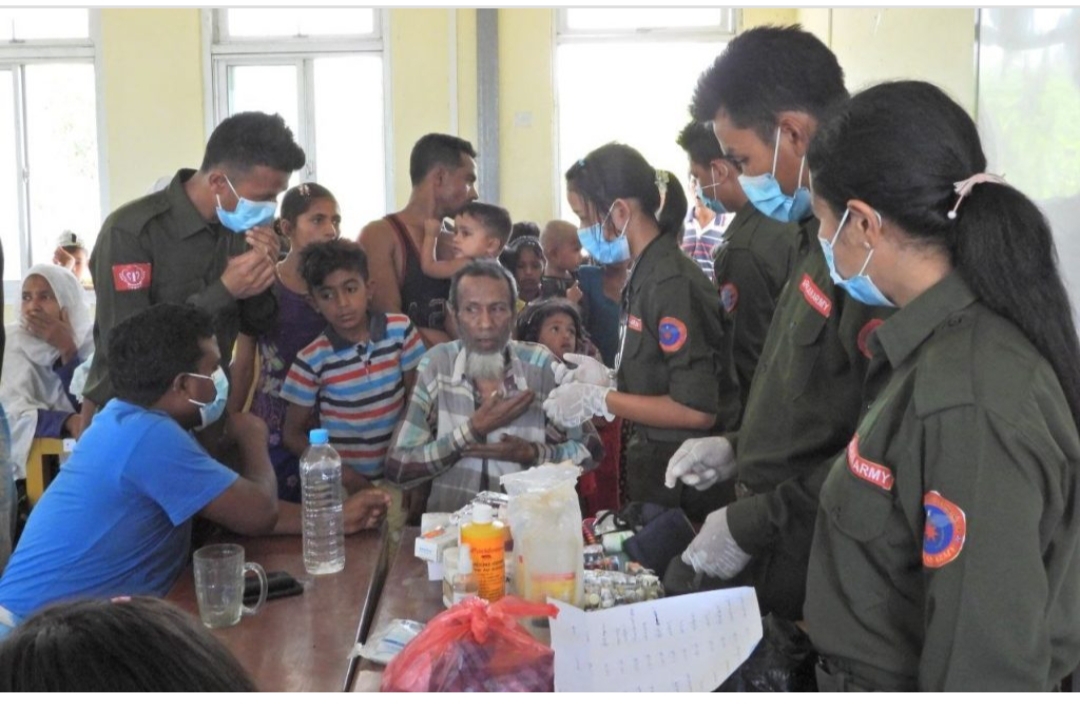|
|
|
This week, the International Court of Justice in The Hague is investigating allegations of genocide, conducted by the Myanmar armed forces against the Rohingya population in Rakhine State. Meanwhile an uneasy peace exists in the territory where the United League of Arakan-Arakan Army continues to expand its administrative outreach following an informal ceasefire in November 2020. In this commentary, Kyaw Lynn examines the political and security rivalries taking place between the military State Administration Council and ULA-AA, with the ULA-AA offering a new vision for a modern Arakan national identity that will include all nationality peoples.
These commentaries are intended to contribute to a broader understanding of the many challenges facing the country and its peoples.
See the complete list of all the Myanmar commentaries.
|
|
|
|
|
|
The Nature of Parallel Governance and Its Impact on Arakan Politics
A Myanmar Commentary by Kyaw Lynn
24 February 2022
|
|
 In response to COVID-19 third-wave, a group of medical officers from the Arakan Army carried out healthcare at Arkataung village’s school in Rathedaung township on 19 May 2021 / Photo credit Frontier Myanmar
In response to COVID-19 third-wave, a group of medical officers from the Arakan Army carried out healthcare at Arkataung village’s school in Rathedaung township on 19 May 2021 / Photo credit Frontier Myanmar
|
|
|
This month marks the first anniversary of the military coup in Myanmar by the State Administration Council (SAC). In most parts of the country, both violent and non-violent resistance movements are continuing against the regime, and there is no sign that shows the defeat of one party or another in the short-term. Meanwhile an apparently contradictory situation has developed in Arakan (Rakhine State). Here the conditions of a “negative peace” or “informal ceasefire” have continued for more than one year between the Tatmadaw (Myanmar military) and Arakan Army (AA). This follows the unexpected agreement of a truce between the two forces in the aftermath of the 2020 general election.
Despite the promise of peace, the political and security situation remains tense and uncertain. This was highlighted by an outbreak of clashes between the Tatmadaw and AA in northern Maungdaw township last November, and concerns have further increased following a new flare-up in the Letpan Range at the beginning of this month during which casualties have been reported on both sides. Meanwhile the Rohingya crisis remains unaddressed, and there are renewed reports of armed members of the Arakan Rohingya Salvation Army (ARSA) continuing to move in the Bangladesh-Rakhine State borders. After a year of apparent calm, Arakan is not a land at peace.
As these struggles continue, it is important to understand why the pace of political events in Arakan has often appeared to move at a different speed – and in different ways – to other parts of the country. Despite the relative reduction in fighting, Arakan’s future is deeply contested, and the territory today is the scene of an intense power struggle between two main parties: the Myanmar government, as controlled by the military SAC since last February, and the Arakan People’s Authority (APA). This latter body was declared in December 2019 by the AA to advance its long-term goal of achieving a new Arakan State under its “Way of Rakhita” philosophy.
Against this backdrop, the political wing of the AA, the United League of Arakan (ULA), has continued to develop administrative mechanisms since its 2020 ceasefire under its state-building agenda. These activities are in competition with the re-organisation of administrative functions instituted by the SAC following last year’s coup, and this rivalry can be witnessed in many parts of Arakan today, especially in rural and suburban areas. As a result, many people are living under the rule of what we call “parallel governance”, an experience that has spread across the territory during the past few years.
The complexities in Arakan politics and society do not end here. The situation cannot be divorced from national politics in the country at large. Since Rakhine State is designated as a part of Myanmar, the developments unfolding in Arakan can only be described as an “emerging state within a state” rather than political rearrangements parallel to government administration at the union level. Equally important, the events happening in Arakan have characteristics of their own which are different in many respects to those in areas controlled by non-state armed actors in other parts of the country, such as Shan State in the China and Thailand borderlands.
This commentary therefore seeks to analyse these different trends in Arakan politics, with an outlook as to what they might portend for Myanmar’s uncertain future.
|
|
|
|
|
|
|
|
|